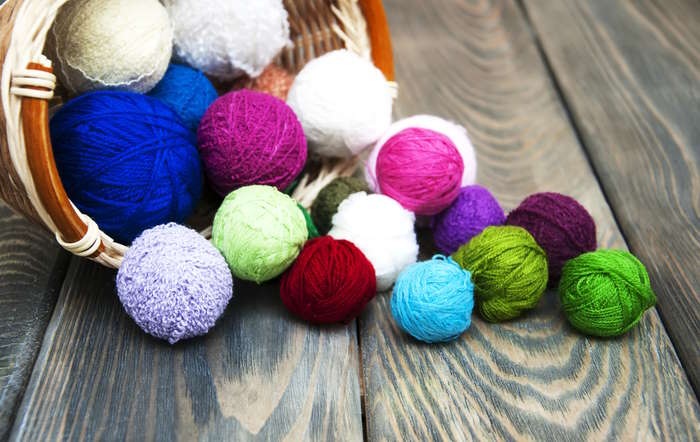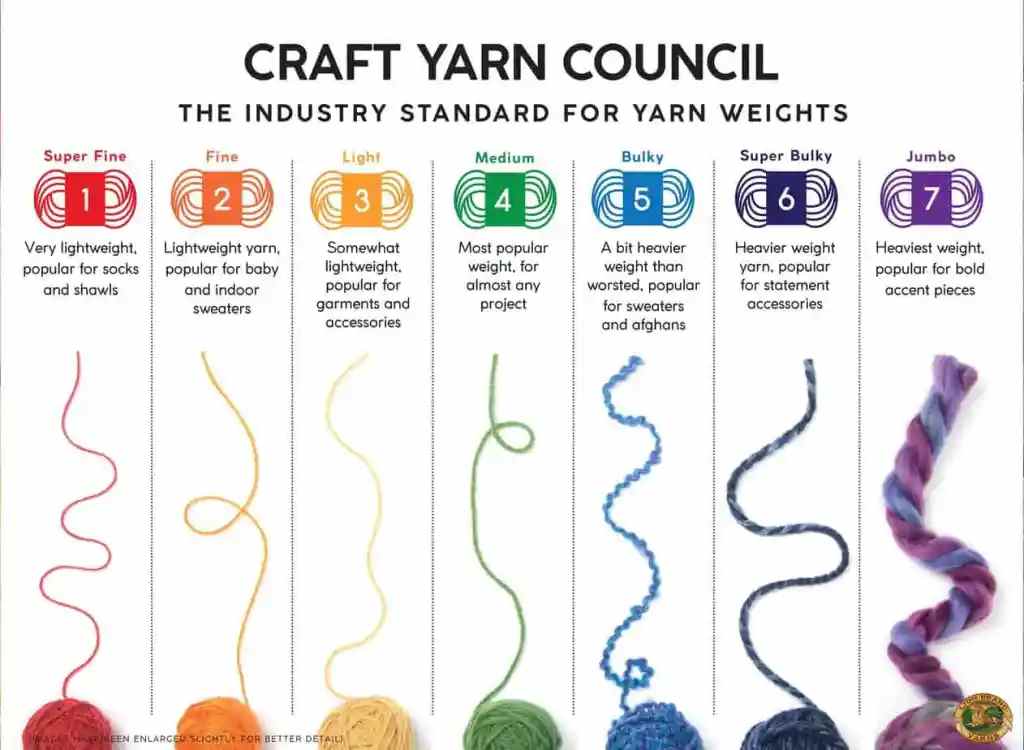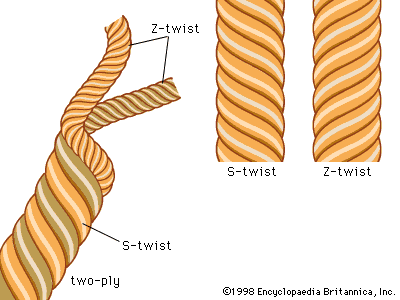- Home
- Yarn Substitutions for Knitting and Crochet
Mastering Yarn Substitutions for Knitting and Crochet Projects
Yarn Substitutions for Kniting and Crochet by Janice Jones,
As a knitter and crocheter, you know that choosing the right yarn for your project is crucial. However, sometimes the yarn you want to use is not available or is too expensive.
That's where yarn substitution comes in. In this article, I will guide you through the process of yarn substitution and provide you with tips and resources to help you master it.

Introduction to Yarn Substitutions for Knitting and Crochet
Yarn substitution is the process of replacing one yarn with another in a knitting or crocheting pattern. This can happen for various reasons, such as the original yarn being discontinued or unavailable, or the cost of the yarn being too high.
When substituting yarns, it is essential to consider several factors to ensure that your finished project looks and feels the way you intended it.
Why Make Yarn Substitutions for Knitting and Crochet?
There are a number of reasons why one may want to make a yarn substitution.
- The yarn called for in the pattern is too expensive.
- The yarn is impossible to obtain.
- You already have a stash of yarn you want to use.
- Older patterns call for yarns that have been discontinued.
- The knitter or crocheter has allergies such as to wool, and cannot work with that type of yarn.
- You would prefer a yarn that is machine washable rather than making a hand washable item.
Understanding Yarn Weight and Fiber Content When Making Yarn Substitutions for Knitting and Crochet
One of the most critical factors to consider when substituting yarns is the weight and fiber content of the yarn.
Yarn Weight
Yarn weight refers to the thickness of the yarn, which is measured in categories such as lace, fingering, sport, worsted, and bulky. When substituting yarns, it is crucial to choose a yarn with the same weight as the original yarn. Otherwise, the finished project's size and drape may be different.

Fiber Content
The fiber content of the yarn is also important to consider. For example, a wool yarn will have a different feel and drape compared to a cotton or acrylic yarn. If a pattern calls for a specific fiber, such as alpaca, and you cannot find it, you can substitute it with a similar fiber, such as wool or mohair.
Yarn Texture
According to Knitting Knowledge, texture refers to the physical characteristics of the yarn and will decribe qualities such as smoothness, softness, or fuzziness. It is how the yarn feels to the touch.
Texture can affect how easy it is to work with and even dictate what type of needles or hooks you will want to use. It also discusses ply.
An Explanation of Ply
Ply or ply count is the number of strands of fiber twisted together to create a strand of yarn. For example, if you see the term, 2-ply yarn, it refers to the fact that two strands of yarn were twisted together. Similarly, 4-ply means 4 strands were twisted together.
The higher the ply count, meaning the number of individual strands of fiber, the tighter the yarn which results in more stitch definition and texture. High ply yarns will be more durable.
The fewer the ply count, the less visible the stitches become. They will be softer, but not hold their shape as well. A yarn that contains a single strand of yarn may come apart because it is not twisted with another strand.
Ply Count
The ply count can be one-ply or single, but in most cases yarn will be made up of multiple plies. One thing that confused me as a beginner knitter was plies.
I thought that the number of plies determined the thickness of the yarn. Perhaps I got this notion because I learned to knit 50 years ago when ply did refer to the yarn weight. Nowadays, the Craft Yarn Council has standarized yarn weight and ply is not part of the definition. With that said, there are still countries in the world that rely on plies to describe yarn weight.
Don't make the same mistake as me. Ply, in the US and other countries, has nothing to do with thickness.
You can purchase two ply bulky yarn or four ply sports weight yarn.
S twisted verses Z twisted

To complicate things further, when individual strans are twisted together to form plies, they may be twisted in opposite directions.
If the yarn is twisted to the left, the twists will form an S shape. If the yarn is twisted to the right, the twists will slant to the right and is called a z twist.
Does twist matter? You may add or remove twists depending on how you knit. If you add twists, the yarn gets tighter, stronger and less likely to split.
If, on the other hand, you remove twists, your yarn slackens and the plies separate making it easier to split.
Most yarns are S twist yarns. Knitters who work either in English or continental style will add twist. But in crocheting, most of us will remove the twist from s twisted yarns.
What Does Ply Have to Do with Yarn Substitutions?
If possible, chose a substitute yarn with a similar ply count and one whose plies have been twisted in a similar direction (s vs. z).
Comparing Texture With Various Types of Yarn
If the recommendation in the pattern calls for a smooth yarn, it's best to substitute with another smooth yarn. Wools, linens, cottons, and acrylics are all smooth. These types of yarns provide great stitch definition and are highly durable.
Opposite of smooth, the fuzzy yarns are more difficult to work with and even irritating to the skin. Fuzzy yarns are great for warm blankets, scarves and heavy sweaters. Examples of fuzzy yarns include mohair, angora, cashmere, alpaca and llama wool.
Factors to Consider When Substituting Yarns for Knitting and Crochet Projects
When substituting yarns, there are several factors to consider to ensure that your finished project looks and feels the way you intended it. Some of these factors include:
- Yarn weight: Choose a yarn with the same weight as the original yarn.
- Fiber content: Choose a yarn with a similar fiber content to the original yarn.
- Gauge: Check the gauge of the original yarn and the substitute yarn to ensure that they are similar.
- Texture: Consider the texture of the original yarn and choose a substitute yarn with a similar texture.
- Ply: Chose a substitute yarn with a similar ply count and strand twist if possible.
Yarn Substitution for Knitting and Crochet Chart - How to Use It Effectively
A yarn substitution chart is a useful tool that can help you choose a substitute yarn for your project. The chart lists different yarns and their weight, fiber content, and gauge.
You can use this information to find a substitute yarn that matches the original yarn's weight and fiber content.
To use a yarn substitution chart effectively, follow these steps:
- Identify the original yarn's weight and fiber content.
- Look for a yarn on the substitution chart that has a similar weight and fiber content.
- Check the gauge of the substitute yarn and compare it to the gauge of the original yarn.
- If the gauge is different, adjust your needle size or hook size to match the gauge of the original yarn.
Knowing How Much Yarn to Purchase
When you make yarn substitutions it's important to purchase the amount of yarn suffient in a specific color and dye lot for the project you are making.
If you plan to make the project in the yarn specified in the pattern, there is no problem. The designer will tell you how much yarn to buy. (example: 5 balls).
If yarn substitutions are made, you must do a bit of math to make sure you purchase sufficient quantities so you don't run out. Here is an example:
Do the Math for Yarn Substitution for Knitting and Crochet
I found an easy sweater I wanted to make. It called for Amerah, SWTC, 10 balls in vineyard. First of all, I had never heard of the yarn so I needed to research.
I discovered that this is a 100% silk yarn, provided in balls 1.75-oz (50-gram) containing approximately 97 yards.
I chose Lion Brand Coboo Natural Fiber Yarn 50% cotton and 50% bamboo, 3.5 oz, 232 yds.
The original pattern requires 970 yards (10 balls x 97 yds.)
The new yarn is 232 yds (970 divided by 232 - 4.18). I will purchase 5 balls of the new yarn to complete the project.
Tips for Successful Yarn Substitutions for Knitting and Crochet
Substituting yarns can be a daunting task, but with these tips, you can ensure a successful substitution:
- Swatch: Always make a swatch with the substitute yarn to ensure that the gauge and drape are similar to the original yarn.
- Keep a record: Record the yarn you used as a substitute for future reference.
- Consider the texture: Consider the texture of the original yarn and choose a substitute yarn with a similar texture.
- Use a yarn calculator: Use a yarn calculator to determine how much substitute yarn you need for your project.
- Don't be afraid to experiment: Substituting yarns can be an opportunity to experiment with different fibers and textures.
Common Yarn Subsititions for Knitting and Crochet
Here are some common yarn substitutions for knitting and crochet:
- Wool: Substitute with alpaca, mohair, or merino wool.
- Cotton: Substitute with bamboo, linen, or hemp.
- Acrylic: Substitute with polyester or nylon.
- Mohair: Substitute with angora or alpaca.
- Silk: Substitute with bamboo or rayon.
How to Substitute Yarns for Different Stitch Patterns
When substituting yarns, it is essential to consider the stitch pattern used in the original pattern. Some stitch patterns may require a specific fiber or texture to achieve the desired effect.
For example, a lace pattern may require a yarn with good stitch definition, while a cable pattern may require a yarn with good stitch memory.
Remember that having a good stitch definition means that each stitch is even, crisp and easy to see the shape of each individual stitch.
Stitch memory, on the other hand refers to the stitch's ability to retain it shape over time.
To substitute yarns for different stitch patterns, follow these steps:
- Identify the stitch pattern used in the original pattern.
- Consider the fiber and texture requirements for the stitch pattern.
- Choose a substitute yarn with a similar fiber and texture to achieve the desired effect.
Yarn Substitutions for Knitting and Crochet: Resources and Tools
Here are some resources and tools that can help you with yarn substitution:
- Ravelry: Ravelry is a social networking site for knitters and crocheters that includes a vast database of patterns and yarns. It also has a yarn substitution group where you can ask for advice on yarn substitutions.
- YarnSub: YarnSub is a website that provides yarn substitution suggestions based on the original yarn's weight, fiber content, and gauge.
- Yarn weight chart: A yarn weight chart can help you identify the weight of the original yarn and find a substitute yarn with a similar weight.
Yarn Substitutions for Knitting and Crochet: FAQs
Here are some frequently asked questions about yarn substitution:
Can I substitute a different weight yarn?
It is generally not recommended to substitute a different weight yarn as it can affect the finished project's size and drape.
Some will substitute yarns of a different weight to change the size of their finished item. This can be easier if the project is a simple scarf where the finished measurements are not that important. But if you are making a wearable, where size matters, it will require advanced skills and math that most crafters prefer not to do.
If you must substitute a different weight yarn, adjust the needle size or hook size to match the original yarn's gauge.
Can I substitute a different fiber yarn?
Yes, you can substitute a different fiber yarn, but consider the fiber's characteristics, such as drape and texture, when choosing a substitute yarn.
How do I know if my substitute yarn will work?
Always make a swatch with the substitute yarn to ensure that the gauge and drape are similar to the original yarn.
Yarn Substitutions for Knitting and Crochet: Conclusion
Yarn substitution can be intimidating, but with the right tools and tips, you can master it and unleash your creativity.
Remember to consider the weight and fiber content of the yarn and use a substitution chart to find a suitable substitute yarn. Always make a swatch with the substitute yarn and keep a record of the yarn you used for future reference.
With these tips and resources, you can confidently substitute yarns and create beautiful projects.
Pin for Future Reference
About Janice
Hi, I’m Janice, the voice behind Smart-Knit-Crocheting. I love to knit and crochet and even more, I love teaching others what I know.
Though I learned to knit and crochet as a child, I didn’t get serious about these amazing hobbies until I retired. I’m a certified knit and crochet instructor through the Craft Yarn Council and am working on becoming a Master Hand Knitter through The Knitting Guild Association.
I’m currently living with my husband of over 50 years and our 6 Shih Tzu dogs.
I love hearing from you, so please drop me a line and let me know what you’re working on, whether you love knitting or crocheting more, and if you have any questions. Please visit my about me page for more information.
Happy Crocheting







